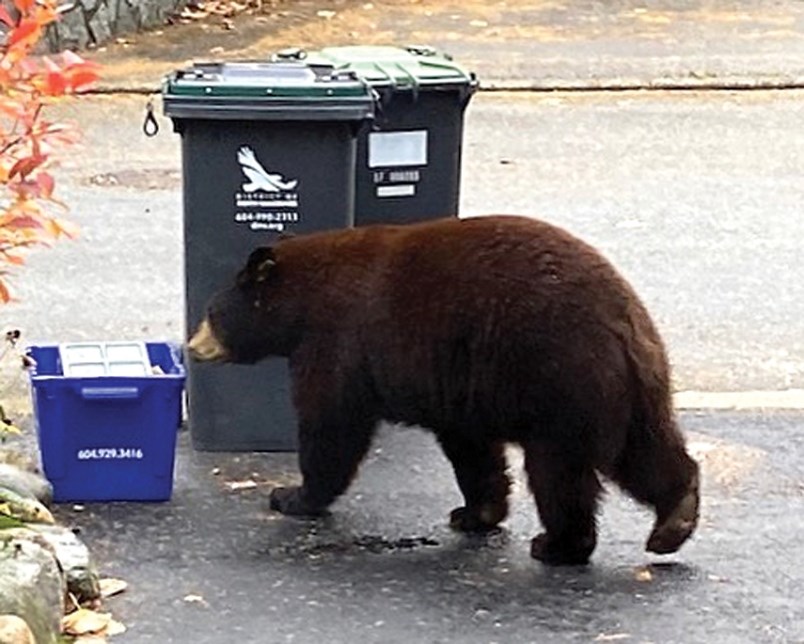Members of the North Shore Black Bear Society are urging use of non-lethal methods after another problem bear was recently destroyed by conservation officers – the 12th bear to meet that fate on the North Shore this year.
The bear, about 18 months old, was an orphan cub that had originally been taken to Critter Care wildlife rehabilitation centre and released back on the North Shore in the spring.
The bear began hanging around populated areas in search of food, said Insp. Murray Smith of the Conservation Officer Service, and had already been trapped and relocated once to the wild in mid-November.
But the bear returned after only about 10 days and was the subject of multiple reports from residents on both sides of the Capilano River.
Conservation officers decided the bear was too habituated to people and human food sources. The bear’s luck ran out Nov. 25 when conservation officers shot the animal.
Comments from some bear society members posted on social media described them as “frustrated, disappointed and sad” at the number of bears that continue to be destroyed on the North Shore.
Christine Miller, spokeswoman for the society, said her group is urging the Conservation Officer Service to make a bigger effort to look into “non-lethal methods of managing bears.”
Some of those can involve hazing techniques using rubber bullets and bear bangers both when bears are spotted in areas they shouldn’t be and when releasing them into the wild, she said.
One method the group would like to see tried is the use of Karelian bear dogs to chase the bears back into the wild. The Karelian are a special Finnish breed of dog that has been used successfully in Washington state by conservation officers to chase bears out of residential areas and keep them from coming back, said Miller.
“They are very successful with their Karelian dogs,” she said.
Smith said it’s something the Conservation Officer Service is willing to look at.
But he added circumstances of large numbers of bears on the North Shore and the Lower Mainland in general living so close to a major city is unique. “We have more bears in a big urban setting than anywhere else in North America,” he said.
Both Miller and Smith agree the main reason bears keep coming into residential areas is people still aren’t managing their bear attractants – including garbage and organics – well enough.
“If there was nothing to eat, there wouldn’t be so much conflict,” said Miller.
She added she’d also like to see stepped up enforcement on the part of both municipalities and the Conservation Officer Service.
Numbers of bears on the North Shore shot by conservation officers because they’ve become habituated vary from year to year. In 2018, for instance, only two bears were destroyed, according to the black bear society, while in 2017, 18 bears were destroyed.
Bears have also been hit by vehicles crossing local roads. In October, a bear was killed after being hit by an out-of-service transit bus on Capilano Road.
More recently, another bear was reported hit by a vehicle on Highway 1 in West Vancouver on the morning of Nov. 21, but the bear ran off before police officers arrived and later couldn’t be found by conservation officers.
Miller said at this time of year, most black bears will be heading to their dens for the winter so the number of conflicts is dropping.



